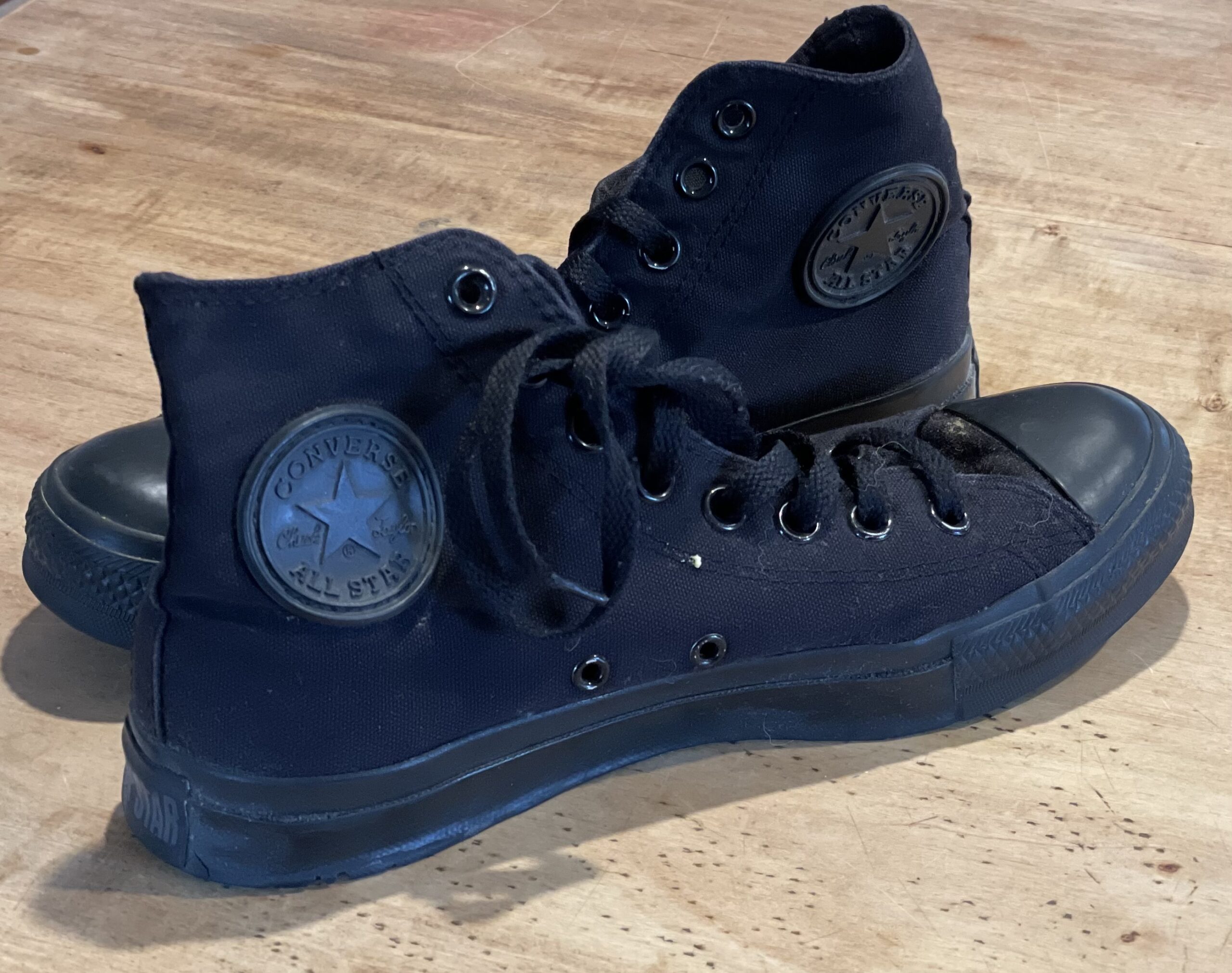Converse sneakers have found fans everywhere from the parquet court of Boston Garden to the stickered stage of CBGB. The popular shoes propelled the jump shots of Julius “Dr. J” Erving and Larry Bird. They were photographed upon the feet of Hollywood icons including Elvis Presley and James Dean. But the humble beginnings of these “All-Star” sneakers can be traced back to a factory in Malden, Massachusetts, which became a center of shoe production following the revolutionary discovery of vulcanized rubber.
When Marquis Mills Converse (1861 – 1931) founded the Converse Rubber Shoe Company in Malden, Massachusetts, he probably wasn’t thinking about the major cultural impact his shoes would have in the worlds of music, movies, and basketball. At that point in 1908, basketball was little more than a peach basket nailed to a P.E. teacher’s gymnasium wall. More than likely, Converse was simply thinking about how to put his best foot forward in the shoe business.
Shoes were somewhat of a family business for M.M., as he was known. His cousins Elisha and James Converse had founded the Boston Rubber Shoe Company in 1853, pioneering the industry as early adopters of Charles Goodyear’s vulcanized rubber. Their Malden factory would become one of the largest rubber manufacturers in the country, employing over 3,500 people.
While managing a department store in Boston, M.M. began scheming ways to sell shoes directly to retailers. He first founded Converse & Pike wholesale rubber boots around 1890. When Pike departed, M.M. relabeled the brand the Converse Rubber Shoe Company and moved it to a factory on Malden’s Pearl Street.
Although the Converse Rubber Shoe Company specialized in winterized boots and rubbers, they released their first canvas sneaker in 1917. A high school basketball star named Charles Hollis “Chuck” Taylor was hired as a salesman, and he took a particular liking to the non-skid sneakers. Taylor traveled the country promoting the shoes through basketball clinics. By the 1930s, his signature was featured on the Chuck Taylor All-Star sneaker.
At the first Olympic basketball tournament in 1936, the American team sported white Chuck Taylor’s with red and blue accents. A trend was born, and the white, red, and blue “Chucks” remain one of the brand’s best-selling styles.
Converse weathered the Second World War by making military apparel, including rubber suits, parkas, pilot boots, and sneakers for soldiers at basic training. When America returned to business as usual, a new generation of trendsetters was donning Converse Sneakers. They were spotted on the feet of Hollywood stars like Elvis Presley, Paul Newman, and James Dean. Chuck Taylors were still the number-one-selling basketball shoe in America, and Converse began branching out its athletic shoes to meet the needs of tennis players, wrestlers, and even skiers.
The cultural explosion continued through the subsequent decades. Basketball rivals Larry Bird and Magic Johnson battled it out in a series of ads for the Converse Weapon. Skateboarders scooped up One Stars, while Punk rockers and grunge musicians latched onto the All-Star’s look for its cheap yet gritty style.
Despite this success, Converse found itself battling bankruptcy as it rounded the new millennium. In 2001, Converse temporarily moved production to Asia, and in 2003 the company was purchased by rival Nike. Much to the delight of fans, Converse headquarters returned to Lovejoy Wharf in Boston in 2015, coming nearly full circle back to its Massachusetts roots.

